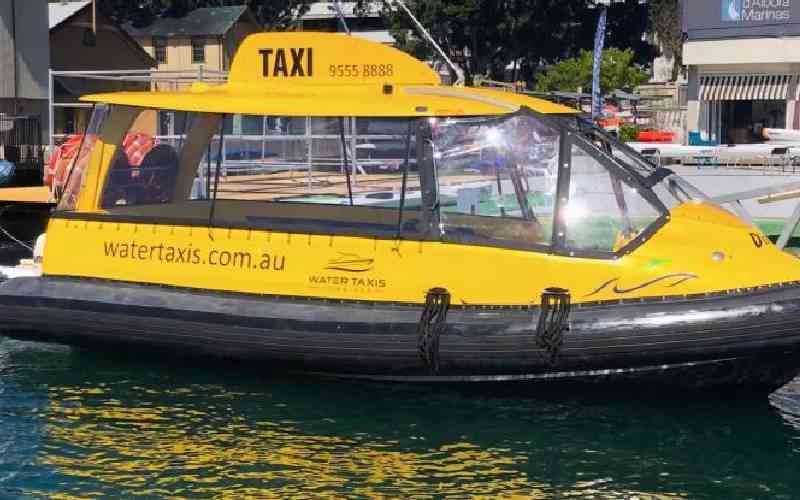
After years of false starts, plans to establish water taxis to connect Mombasa island to the north and west took a major step forward after approval from the country government.
This would be a boost to the county’s plan to establish water transport infrastructure to address traffic congestion especially at Nyali Bridge and Kibarani Causeway.
Governor Abdulswamand Nassir plans a modern water transport system to end congestion on the roads. In September, Mombasa County said it reached out to international bidders to help develop the project billed as a game changer in the tourism sector.
Keen to exploit this potential, MCAs unanimously supported the motion to implement the plan proposed by Shanzu MCA Allen Katana. The MCAs said this would improve the county’s source revenue.
“Mombasa holds a unique geographical advantage to foster water transport as it lies along the Indian Ocean. Water transport has the potential to give revenue to the County,” argued Katana.
The MCAs cited a model witnessed in Dar es Salaam, Zanzibar, and Seychelles where speedboats efficiently ferry passengers and goods between the mainland and the islands.
“Other than increasing the county’s revenue, the water transport system will also create jobs, thus boosting economic growth and decongesting the existing road network,” said Katana.
The assembly resolved to task the county government to initiate a thorough feasibility study to assess the viability of establishing water transport infrastructure and collaborate with relevant maritime authorities.
The assembly also tasked the county government to create public awareness of the benefits of water transport for the community.
Mombasa first mooted the plan to create a water bus service in 2014. However, the plan failed to take off due to lack of supporting legislation and political willingness. The plan was also held back by a standoff on whether ports, ferries and harbours should be run by counties.
In the same year, the defunct Transition Authority (TA) issued an advisory saying that ferries fall under the national government, ostensibly locking out Mombasa from establishing a water transport system.
Despite the advisory, in 2014, Mombasa County Assembly unanimously passed the controversial Ferries and Habours Bill, 2014. The MCAs said ferries and harbours should fall under counties.
They argued that under part two of the Fourth Schedule of the 2010 Constitution, the two function falls under the county governments. The MCAs said that the constitution was supreme to any law.
In the plan, the Mombasa County Government was to collect a fee for all vessels that are anchored within the county waters. It was also pushing the national government to devolve Kenya Ferry Services.
Kenya Ferry Services (KFS) that run ferries at the Likoni Crossing Channel is currently domiciled under the Kenya Ports Authority (KPA). Mombasa has unsuccessfully also tried to levy ships docking at the port.
Other than legal hurdles, the county is also expected to conduct a study after three phased initial pre-feasibility studies on the technical and economic viability of water transport in Mombasa (Island Line) were carried out.
The county has also explored potential investors to be approached. “Once the technical viability is proven and the commercial feasibility has been researched, the follow-up would be conducting an Environmental Impact Assessment (Phase B),” states a 2017 study by the county
It says that “this phase offers opportunities for Dutch involvement, building on existing knowledge about impact assessment and the interpretation of its results.”
The final step, according to the county master plan, would be to support the Mombasa County Government in acquiring funds from public and private bankers and investors.
But the big question is whether passengers would be willing to pay for the services. ”This is needed to determine affordable tariff ranges, the required capacity of water transport services, and the conditions for commuters to shift from another modality to water transport, “states the report.
Mombasa County would also carry out bathymetrical surveys at the proposed landing site locations and inventory the technical requirements of the landing sites.
This is to determine the ownership of landing sites, and inventory of the required peripheral infrastructural investments at the landing site locations like parking spaces, and access roads to landing sites.
After this, the county is also expected to do an inventory of the water busses’ required technical specifications, import and registration conditions, and maintenance requirements.
“Design of the passenger transport service, number of vessels, line per vessel, schedule, tariffs,” states the report after a meeting between the county and experts in 2017.
Yesterday, Kenya Association of Hotelkeepers and Caterers (KAHC) Executive Officer Coast Sam Ikwaye said that a water transport system in Mombasa was long overdue.
“Our request again is for the assembly to ensure that it makes practical beach management principles to allow for smooth operationalization of water transport,” he said.
“Water transport and related activities have not been exploited enough yet access leading to the very establishment of the city was by water. We have ignored the history over time, “ Ikwaye added.
Meanwhile, Governor Abdulswamand Nassir’s administration is currently pushing the national government to relinquish the management of the old port in Kibokoni to the county.